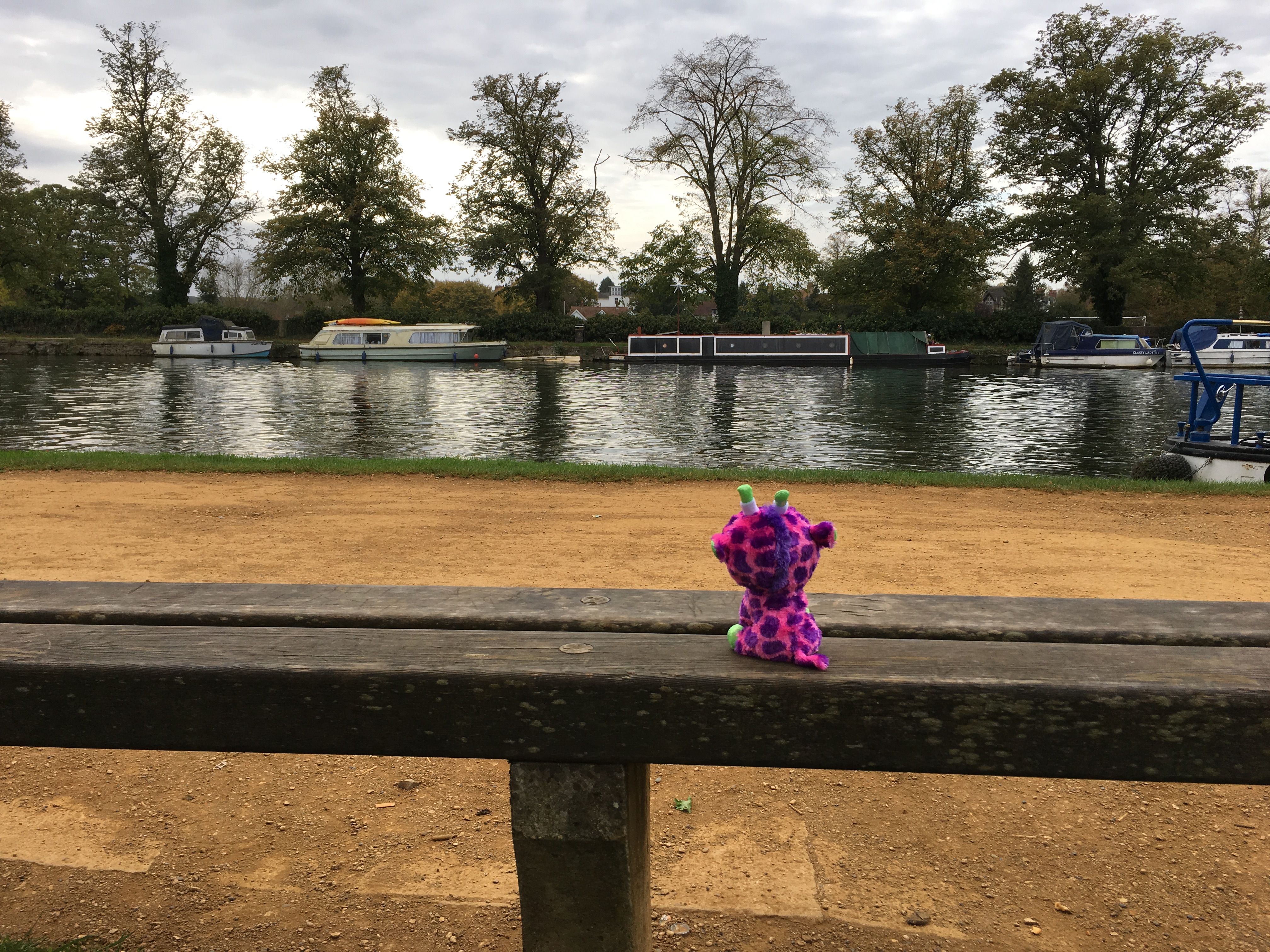The fog around Arthur’s seat wasn’t thick and it didn’t obscure any part of the hill by resting on the top or reclining around the bottom by the lochs. It was more like a gossamer cloth revealing just enough of the shape of the hill and its various hues to invoke one’s imagination. Nature’s fan dance created interest as the fog moved around the park, revealing glimpses of images before hiding them again. The parking lot near Holyrood Park was quite empty. It seemed like a good time to explore more of the area without having to share it with the, you know, tourists. 
 I managed the actual climbing part of the park on the one morning, two days ago, when the clouds parted for us patient photographers with sub-standard climbing shoes.
I managed the actual climbing part of the park on the one morning, two days ago, when the clouds parted for us patient photographers with sub-standard climbing shoes.  Now it was time to wander around a bit, stopping by St. Margaret’s loch to see the swans and then walking along Queen’s Drive with an occasional detour up a trail. Nothing too strenuous or too far from the madding crowd. So what was the difficulty? The problem was that I was stricken with a slight cold and had used those two days to catch up on my reading. Along with Arthur Conan Doyle, I read the local history of Arthur’s Seat. Bad idea.
Now it was time to wander around a bit, stopping by St. Margaret’s loch to see the swans and then walking along Queen’s Drive with an occasional detour up a trail. Nothing too strenuous or too far from the madding crowd. So what was the difficulty? The problem was that I was stricken with a slight cold and had used those two days to catch up on my reading. Along with Arthur Conan Doyle, I read the local history of Arthur’s Seat. Bad idea.
Let me fill you in on some of the more colorful history. I’m not sure why, but fog seems to go hand-in-hand with the Victorian novel. Not that all of this history revolved around the Victorian era. It just fit the template for my highly-evolved imagination. What is it that people say? There’s nothing there in the dark that isn’t there in the daylight? Well that isn’t quite true, is it?
Anyone studying British modern history has heard of Burke and Hare, two men who traded in their canal building skills to provide bodies to Dr. John Knox for his Edinburgh anatomy lectures.  There were religious and legal restrictions on autopsies, making bodies scarce for anatomy classes. Knox needed more and didn’t ask too many questions about how Burke and Hare happened upon so many available cadavers. From 1827-1828, Burke and Hare managed to “find” bodies by smothering their victims and then selling the bodies to the school. Hare turned King’s Evidence against Burke, who was convicted and hanged in 1829. I can’t say that any of these bodies were “found” around Arthur’s Seat, but a couple of boys in 1836 discovered seventeen miniature coffins in a cave along Arthur’s Seat. The number, which corresponds to Burke and Hare’s victims, was initially attributed to witchcraft, but now there’s some speculation that it was a memorial to the victims of Burke and Hare. Some of those coffins are displayed in the National Museum of Scotland.
There were religious and legal restrictions on autopsies, making bodies scarce for anatomy classes. Knox needed more and didn’t ask too many questions about how Burke and Hare happened upon so many available cadavers. From 1827-1828, Burke and Hare managed to “find” bodies by smothering their victims and then selling the bodies to the school. Hare turned King’s Evidence against Burke, who was convicted and hanged in 1829. I can’t say that any of these bodies were “found” around Arthur’s Seat, but a couple of boys in 1836 discovered seventeen miniature coffins in a cave along Arthur’s Seat. The number, which corresponds to Burke and Hare’s victims, was initially attributed to witchcraft, but now there’s some speculation that it was a memorial to the victims of Burke and Hare. Some of those coffins are displayed in the National Museum of Scotland.
Then there’s the story of the doctor who married and within a few weeks decided he had made a mistake. He attempted to pay others to help him get rid of the wife. The doctor’s first scheme involved paying someone to provide enough evidence against his wife that met the requirements of divorce. When this failed he hired his brother to poison his wife. The brother failed as well, so the doctor took his wife for a walk to Duddingston (a village accessed from the park). When alone, he happened to find a knife he had borrowed and stabbed her to death. The cairn marking the spot of her death was moved, so I’m not sure where along the way it happened. I can tell you that my thoughts were on that woman and her murder as I walked along the road to Duddingston.
And I don’t need to say much about a menacing hound and the fog. Dogs are rarely kept on a leash in Holyrood Park, so it is always likely one might encounter a hound. There’s Murder Acre and Hangman’s Craig and possibly some unexpected and not quite explained deaths from “accidental” falls. Might I happen upon a ghostly pair dueling in the mist? It is good that I hadn’t read much more. My heart was beyond its aerobic threshold. Ghostly fingers tickled my spine. And then I saw them as the fog lifted. Tour buses filled with Germans and Americans rolled by and stopped so their occupants could jump out for a quick picture of Edinburgh from above.
I resisted the urge to look back. Who knows what I might have seen following me as the fog dissipated.







